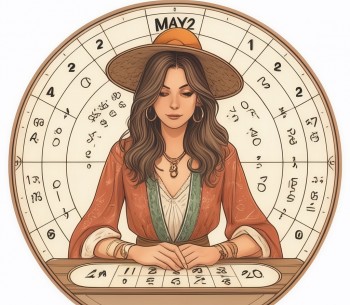How To Celebrate St Joseph's Day (March 19): History, Meaning And Quotes
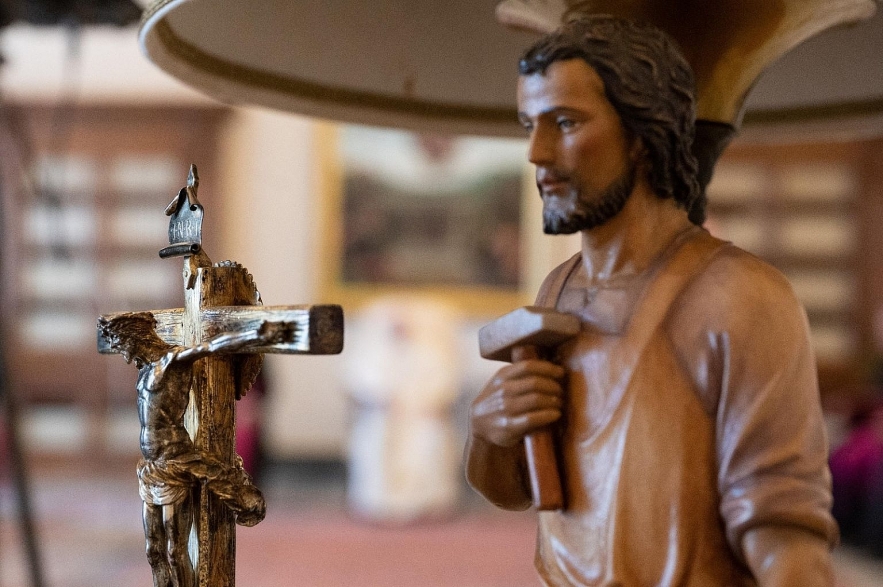 |
| How To Celebrate St Joseph's Day (March 19): History, Meaning And Quotes. Photo Herald Malaysia |
Who was St.Joseph?
Venerated as a saint in many Christian sects, Saint Joseph is a biblical figure who is believed to have been the corporeal father of Jesus Christ. Joseph first appears in the Bible in the gospels of Matthew and Luke; in Matthew, Joseph's lineage is traced back to King David. According to the Bible, Joseph was born circa 100 B.C.E. and later wed the Virgin Mary, Jesus's mother. He died in Israel circa 1 A.D.
| 10 FACTS ABOUT ST. JOSEPH In 1955, an additional feast day was declared by Pope Pius IX and is celebrated on May 1 as the Feast of St. Joseph the Worker. This date is also International Workers’ Day and believed to reflect Joseph as the patron saint of workers. The statue in front of Barbelin Hall of St. Joseph the Worker was donated by students of The Evening School who studied in the evenings after work. Symbols associated with Joseph include the carpenter's square and lily. The carpenter’s square not only symbolizes Joseph’s trade but also the concept of truth. The lily, which can also be seen in the Saint Joseph’s University logo over the letter J, represents purity and Joseph’s celibate marriage to the Virgin Mary. Joseph is the patron saint of the Universal Church, families, fathers, expectant mothers, travelers, immigrants, house sellers and buyers, craftsmen, engineers and working people, among others. In the grotto behind the Chapel of Saint Joseph stands a statue of St. Joseph the Dreamer. Serving as a space for personal retreat, prayer and reflection, the grotto features a light that is always on. Joseph is also considered to be the patron saint of the New World, China, Canada, Korea, Mexico, Austria, Belgium, Croatia, Peru, Vietnam and several cities and dioceses. Inside the Chapel of Saint Joseph is an image of a sleeping St. Joseph, a weary traveler fleeing with his family to Egypt – and a replica of one Pope Francis keeps in his room. The pope places notes of special intercession on pieces of paper under the statue. Visitors to the chapel can do the same, placing their intentions under the statue, asking the fatherly saint to intercede to God for a special need. On the 150th anniversary of the declaration of St. Joseph as Patron of the Universal Church, Pope Francis proclaimed a Year of St. Joseph beginning Dec. 8, 2020 through Dec. 8, 2021. In an opinion column for The Philadelphia Inquirer, Daniel Joyce, S.J. ’88, executive director of mission programs, described the pope’s official opening of a yearlong celebration as “a global call for solidarity and a renewed way of being family in the post-pandemic world.” Although we know Joseph as a working carpenter, he is descended from royal lineage, the line of David. Joseph is portrayed in works of art with grey hair and a beard, an older figure next to Mary and Jesus, and often in the background. In the pope’s Apostolic Letter entitled Patris Corde, he wrote, “In his relationship to Jesus, Joseph was the earthly shadow of the heavenly Father. He watched over him and protected him, never leaving him to go his own way. We can think of Moses’ words to Israel: ‘In the wilderness … you saw how the Lord your God carried you, just as one carries a child, all the way that you traveled’ (Deuteronomy 1:31). In a similar way, Joseph acted as a father for his whole life.” The scriptures mention nothing of Joseph’s age and previous life. However, one early tradition believes he was an older man and a widower with children from a previous marriage. The first apostolic mission entrusted by the Pope to the Society of Jesus was given on the Feast of St. Joseph, Mar. 19, 1539. On this auspicious feast day, the mission of the Jesuits began – and continues to this day around the world. The Jesuits began their mission in Philadelphia in 1707, saying regular Masses under the patronage of St. Joseph in Quaker-owned boarding houses and shops, and the homes of Catholic families. This led to the establishment in 1733 of Old Saint Joseph’s Church, the first permanent Jesuit ministry in the city. |
When is St. Joseph's Day?
Saint Joseph's Day, 19th March, has been the Feast of St. Joseph in Western Christianity since the tenth century.
In Colombia, St. Joseph's Day is celebrated on the Monday closest to 19th March.
In Spain, this is a regional holiday celebrated in Castilla-La Mancha, Galicia, La Rioja, Madrid, Melilla, Murcia and Valenciana only.
In Switzerland, this is a regional holiday celebrated in Graubünden, Lucerne, Nidwalden, Schwyz, Solothurn, Ticino, Uri and Valais only.
| St. Joseph's Day is very popular in New Orleans, where there are many descendants of Sicilian immigrants. This day is best associated with the types of pastries served. The popular ones are zeppole (doughnuts) and sfinge (cream puffs). Lemons are considered lucky while meat is typically absent during the feast. |
How St. Joseph's Day Is Celebrated
Visit an altar
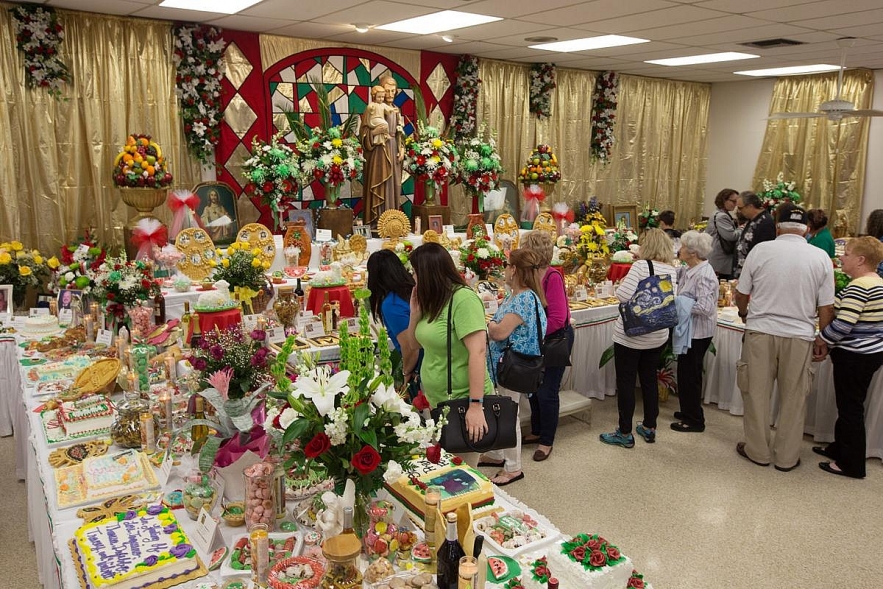 |
| Photo nola |
A St. Joseph's Altar or la tavola di San Giuseppe can be found in a private home, a church or in more unusual places in New Orleans, such as Rouses Markets, restaurants, bars or hotel lobbies. Find one near you or make a pilgrimage throughout the day on March 19, visiting as many as you can.
| How did the altar tradition begin? The tradition of building an altar, laden with seafood, breads, pastries and citrus to honor San Giuseppe, the father of Jesus, began in Sicily. In the Middle Ages, residents there prayed to St. Joseph, the island nation's patron saint, to provide for them during famine. On the saint's feast day, March 19, they built altars in thanks. Why are they so popular in New Orleans? In the 19th century, many Sicilians immigrated to New Orleans, with many settling in the French Quarter, which was even given the nickname "Little Palermo." With these immigrants, came the tradition St. Joseph altars. Some say that the tradition grew more popular during World War II when many Italian-Americans went to war and their families back home made altars to pray for their safe-keeping. In New Orleans, altars were once more commonly held in private homes. Now, the altars are found in many public places as well. Hundreds of volunteers spend hours making the foods and building the displays. Visitors go to give thanks for answered prayers or to ask for healing or other petitions. What's on a St. Joseph Day altar and why? Some of the foods and objects on St. Joseph day altars have obvious ties to faith and tradition. The altars feature displays of candles, fruit, flowers, vegetables as well as sweet and savory dishes. The altars, traditionally, do not feature meat, but will have seafood dishes and vegetarian dishes, such as stuffed artichokes. Many dishes would be right at home on any Italian supper table, such as baked fish or fig cookies. Some are whimsical, such as the sweet little coconut lamb cakes, and others, can be a bit startling. Consider the St. Lucy's eye pie (pictured above). St. Lucy hailed from Sicily and is the patron saint of the blind and visually impaired. Breads are baked shaped into carpenter's tools, crosses and fish. Cuccidata, or pastries with fig filling, are made in the shape of chalices, wreaths, hearts or other Christian symbols. Also, on many altars, expect to find elaborate cakes and displays that serve as memorials to family members who have died. |
Freeze bread to ward off hurricanes
Many altars offer gift bags to visitors. They usually contain sweets, such as fig cookies, a piece of bread, a blessed fava bean and a prayer card. Rather than eat the bread, some New Orleanians believe you should put it in the freezer. Then, when the next storm is approaching, say a prayer break the bread and scatter it in your yard to protect your property.
Study the breads and pastries for symbolism: St. Lucy's Eye Pies feature a top crust with the eyes cut out to pay homage to the patron saint of the blind. (Photo by Kathleen Flynn, Nola.com / The Times-Picayune)
Learn from the breads and pastries
The altars are laden with symbols, especially when it comes to the breads and pastries. Here are a few things to look for: Pupa cu l'ova, bread baked with dyed eggs that heralds the coming of Easter. Heart-shaped breads represent the Sacred Heart of Jesus or the Immaculate Heart of Mary. Breads shaped like hammers or other tools represent Joseph's work as a carpenter. Other breads may be shaped like lambs, doves, crosses and staffs. St. Lucy's Eye Pies feature a top crust with eyes cut out to pay homage to the patron saint of the blind and visually impaired. Pignolata symbolize pinecones played with by the child Jesus.
| Italian-Americans gather together wearing red costumes to enjoy the feast day by donating food to the hungry. The feast day is also widely known as San Giuseppe. It is believed that St. Joseph saved Sicily after the region was struck by a terrible famine, according to Catholic Culture. |
What they do and don't eat on St Joseph's Day
-Traditional foods include a bean soup called minestras, stuffed artichokes and other vegetables and an assortment of bread baked into symbolic shapes like a staff, a hand and a cross.
-People don’t eat cheese on this day. Dry breadcrumbs are a traditional topping for some dishes, though.
-For dessert, revelers will indulge in cookies with almonds and a famous St. Joseph’s Sfinge, which is a large donut-like pastry covered in sugar, is served. Sometimes they’re filled with creams or custards.
-Meat is not typically eaten during this feast day, as the day falls over Lent.
-Lemons and fava beans are staples for this feast day.
Quotes about St. Joseph's Day
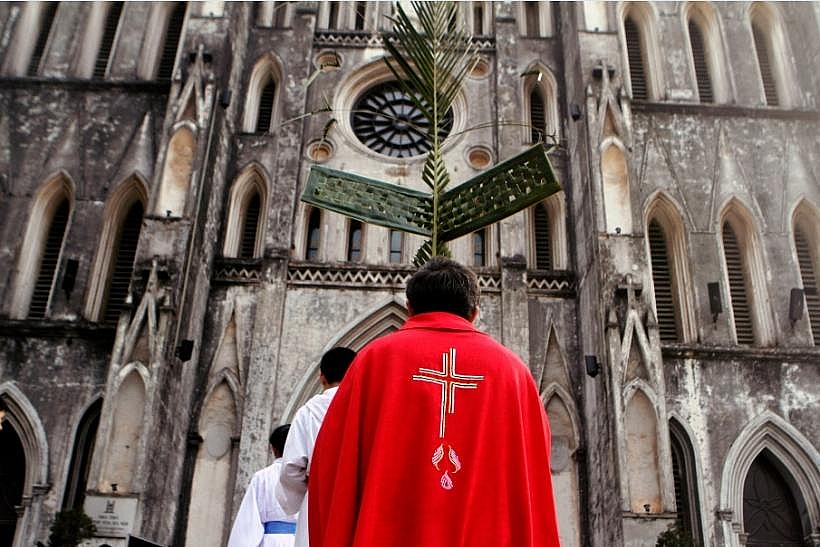 |
| Photo International Business Times |
1. “He was chosen by the eternal Father as the trustworthy guardian and protector of his greatest treasures, namely, his divine Son and Mary, Joseph’s wife. He carried out this vocation with complete fidelity until at last God called him, saying: ‘Good and faithful servant, enter into the joy of your Lord.’” — St. Bernardine of Siena
2. “St. Joseph was chosen among all men, to be the protector and guardian of the Virgin Mother of God; the defender and foster-father of the Infant-God, and the only co-operator upon earth, the one confidant of the secret of God in the work of the redemption of mankind.” — St. Bernard of Clairvaux
3. "We should, indeed, honor St. Joseph, since the Son of God Himself was graciously pleased to honor him by calling him father. The Holy Scriptures speak of him as the father of Jesus. ‘His father and mother were marveling at the things spoken -- concerning Him’ (Luke 2:33). Mary also used this name: ‘in sorrow thy father and I have been seeking thee’ (Luke 2:48). If, then, the King of Kings was pleased to raise Joseph to so high a dignity, it is right and obligatory on our part to endeavor to honor him as much as we can.” — St. Alphonsus Liguori
4. “Some saints are privileged to extend to us their patronage with particular efficacy in certain needs, but not in others; but our holy patron St. Joseph has the power to assist us in all cases, in every necessity, in every undertaking.” — St. Thomas Aquinas
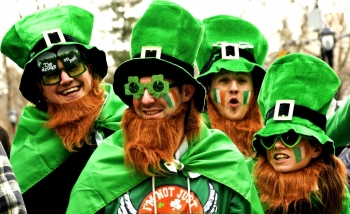 St Patrick’s Day (March 17): History, Celebration, Tradition, Meaning And Jokes St Patrick’s Day (March 17): History, Celebration, Tradition, Meaning And Jokes It's time to wear your best green attire and maybe even a shamrock pin, because St. Patrick's Day is just around the corner! Read on ... |
 National Spouses Day: Celebration, Best Wishes, Quotes and History National Spouses Day: Celebration, Best Wishes, Quotes and History National Spouses Day (January 26) is an unofficial holiday encouraging people to let their spouses know how much they are loved, respected, and appreciated. |
 National Donor Day: Date, History, Significance and Meaningful Activities National Donor Day: Date, History, Significance and Meaningful Activities What do you think about donating blood on Valentine's Day? The National Donor Day which falls on February 14 aims to raise awareness of the ... |
 How To Celebrate 'Love Your Pet Day': Date, History and Meaning How To Celebrate 'Love Your Pet Day': Date, History and Meaning National Love Your Pet Day is a wonderful excuse for pet owners to show their beloved pets just how much they care. Read on to ... |








